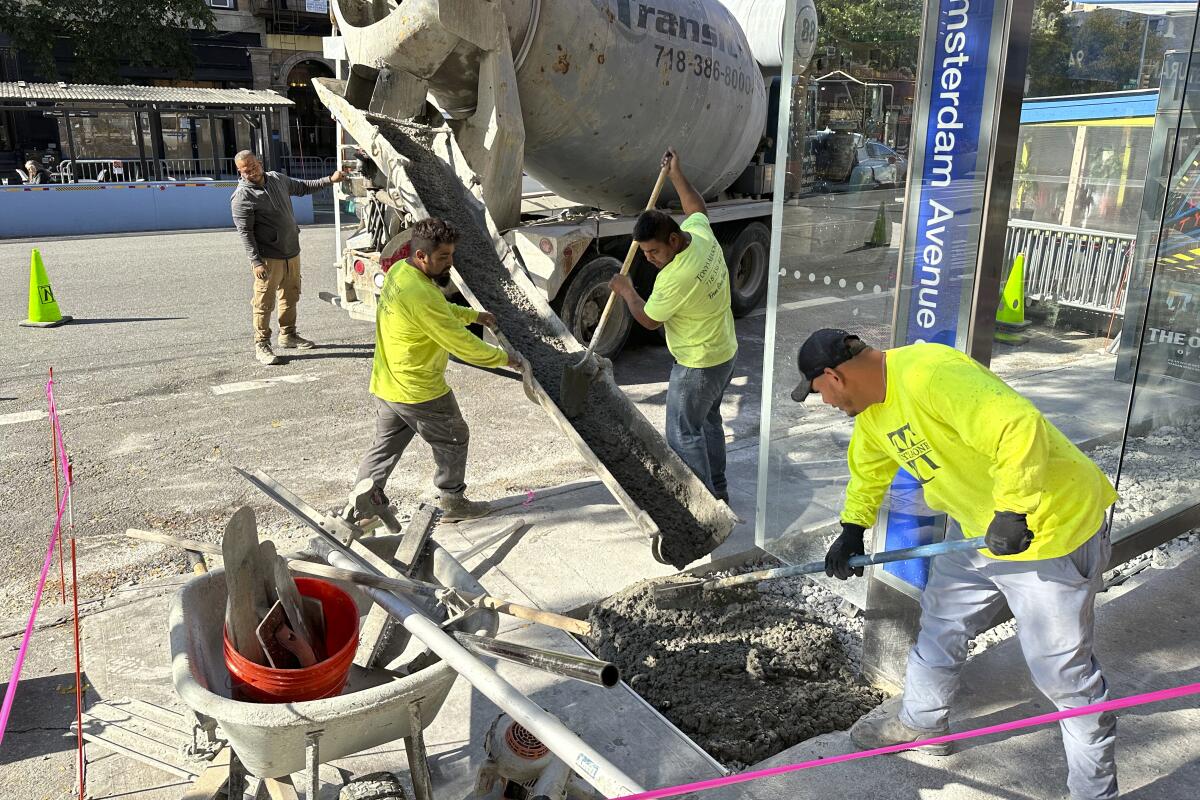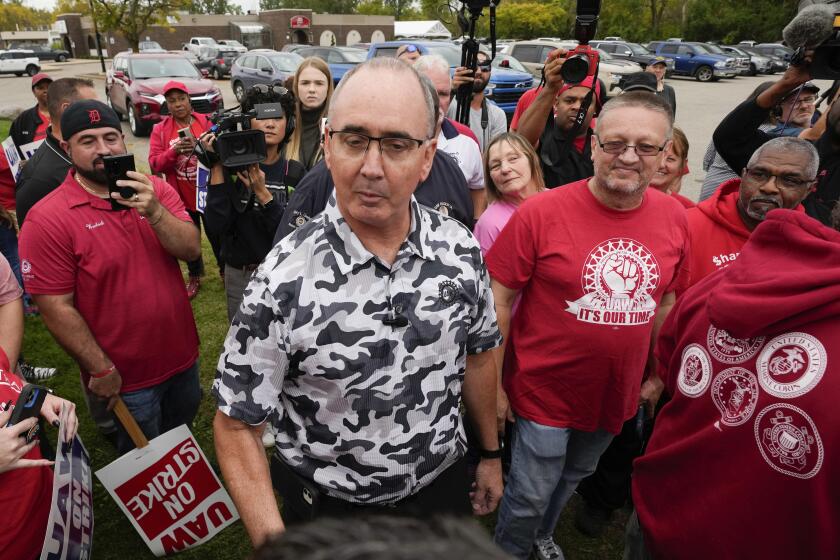U.S. employers pulled back on hiring in October, adding 150,000 jobs

- Share via
The nation’s employers slowed their hiring in October, adding a modest but still decent 150,000 jobs, a sign that the labor market may be cooling but remains resilient despite high interest rates that have made borrowing much costlier for companies and consumers.
Last month’s job growth, though down sharply from a robust 297,000 gain in September, was solid enough to suggest that many companies still want to hire and that the economy remains sturdy.
And job growth would have been higher in October if not for the now-settled United Auto Workers’ strikes against Detroit’s automakers. The strikes likely shrank last month’s job gain by at least 30,000, economists say. The strikes ended this week with tentative settlements in which the companies granted significantly better pay and benefits to the union’s workers.
The unemployment rate rose from 3.8% to 3.9% in October. In another sign of a possible softening in the labor market, the Labor Department revised down its estimate of job growth in August and September by a combined 101,000.
The UAW strikes resulted in an overall loss of 35,000 factory jobs in October. But most other sectors posted solid job gains, notably healthcare, which added 58,000, government agencies 51,000 and construction companies 23,000.
The UAW’s great new contracts with GM, Stellantis and Ford show that union solidarity and concrete goals bring major victories for workers for the first time in decades.
Wage pressures, which have been gradually slowing, eased further in October. Average hourly pay rose 0.2% from September and 4.1% from 12 months earlier. The year-over-year wage increase was the lowest since June 2021; the month-over-month rise was the smallest since February 2022.
Friday’s jobs report from the government comes as the Federal Reserve is assessing incoming economic data to determine whether to leave its key interest rate unchanged, as it did this week, or to raise it again in its drive to curb inflation. Last month’s slowdown in pay increases, along with the lower job gain, could help convince the Fed that inflation pressures will continue to cool and that further interest rate hikes may not be needed.
The Fed has raised its benchmark interest rate 11 times since March 2022 to try to slow the economy and tame inflation, which hit a four-decade high last year but has slowed sharply since then. In September, consumer prices rose 3.7% from a year earlier, down drastically from a year-over-year peak of 9.1% in June 2022 but still well above the Fed’s 2% target level.
The U.S. job market has remained on firm footing despite those rate hikes and has helped fuel consumer spending, the primary driver of the economy. Employers have now added a healthy 204,000 jobs a month over the past three months.
The number of people in the labor force — those who either have a job or are looking for one — fell by 201,000 in October, the first drop since April. That may be unwelcome news for the Fed. Over the last year, more than 3 million people have entered the workforce, making it easier for companies to find workers. This has reduced pressure on employers to jack up pay and pass on their higher labor costs to their customers through higher prices. But the trend was broken last month.
Home Depot’s ex-CEO complained that retail theft is making the U.S. a ‘lawless society,’ but his company just paid millions to settle charges that it lawlessly cheated workers of pay.
The Fed’s policymakers are trying to calibrate their key rate to simultaneously cool inflation, support job growth and ward off a recession. Despite long-standing predictions that the Fed’s ever-higher rates would trigger a recession, the U.S. economy grew at a 4.9% annual pace from July through September, the fastest quarterly expansion in more than two years.
And many companies are still looking to hire. On Wednesday, the Labor Department reported that employers posted 9.6 million job openings in September, up slightly from August. Openings are down substantially from the record 12 million recorded in March 2022 but are still high by historical standards: Before 2021 and the economy’s powerful recovery from the COVID-19 recession, monthly job openings had never topped 8 million. There are now 1.4 jobs available, on average, for every unemployed American.
The combination of a solid economy and decelerating inflation has raised hopes that the Fed can nail a so-called soft landing — raising interest rates just enough to tame inflation without tipping the economy into recession.
“The muted 150,000 gain in non-farm payrolls in October is another sign that the economy’s strength in the third quarter is likely to unwind in the fourth,’’ said Andrew Hunter of Capital Economics. “With wage growth also continuing to slow, it is increasingly hard to imagine the Fed hiking interest rates any further.’’
More to Read
Inside the business of entertainment
The Wide Shot brings you news, analysis and insights on everything from streaming wars to production — and what it all means for the future.
You may occasionally receive promotional content from the Los Angeles Times.












